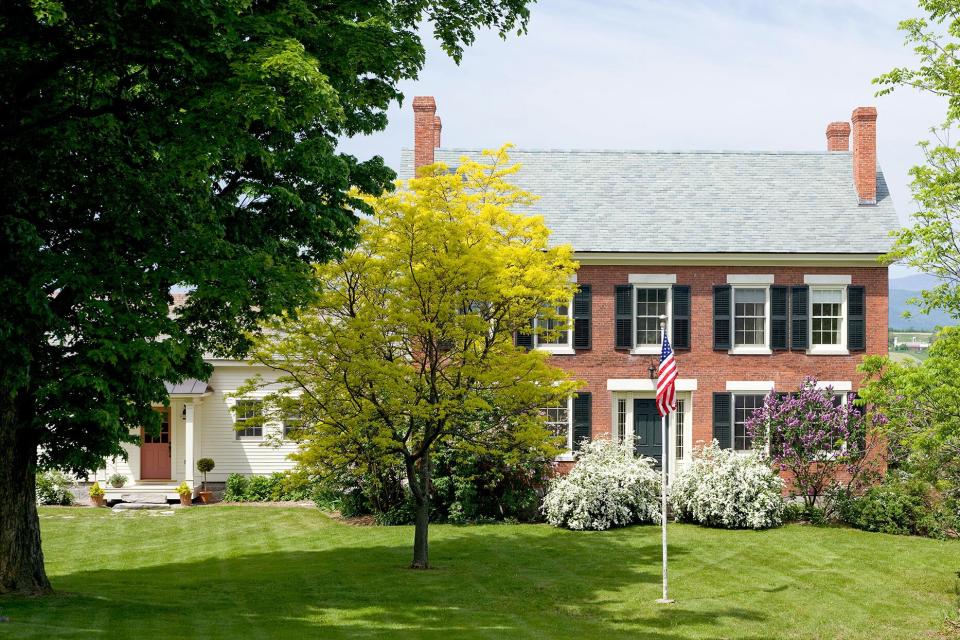5 Tips for Choosing the Best Trees to Plant in Your Yard
The right tree in the right place can create an inviting outdoor living space, frame a view, or simply add valuable shade or structure to your yard. But selecting a tree or two to buy for your yard usually requires more consideration than, say, deciding on a few flowering plants to fill your patio containers. With thousands of varieties to choose from, finding that just-right tree can feel like a tall order. Plus, adding a tree to your landscape can be a significant investment of both money and time. Focus your search and find the best tree for your yard with these simple strategies.

Jim Westphalen
1. Size Up the Growing Space
The size of the planting area is critical when choosing a tree. To begin, what is the width of the space where you would like to plant your tree? Is the planting spot near a building, fence, or other large plants? If so, measure out how much room there is for a tree to fill without its growth being restricted.
Next, take a look at the height potential for the location. If power lines are overhead, you'll need to make sure your full-grown tree won't touch them. And might the mature tree send limbs over your home? A tree growing over a home rarely causes a problem, but potential issues can be avoided by choosing a tree with a narrow growth habit, instead of a spreading crown. Finally, consider where the tree will cast its shadow. Shade is generally welcome except near planting spots, such as a vegetable garden, where you want full sun.
Trees are grouped into two general categories based on size. Ornamental trees are generally small trees, maturing at less than 30 feet tall and 10 to 20 feet wide. Shade trees are considered large trees and usually grow 30 to 60 feet or more tall and wide. Thanks to plant breeding, there are many exceptions to the above groups.
2. Make a Job Description
Reading through tree descriptions is a little like reading through resumes. The first task in finding the best candidate is determining what you would like them to do. The same goes for a tree in your yard. How would you like a new tree to contribute to your landscape?
Related: Why You Should Never Plant an Empress Tree in Your Yard
Are you looking for shade for a patio or outdoor play space? Would you like to screen a view or create a wind block? Does your landscape need more color in spring or fall? Do you want to plant a tree that will support wildlife such as pollinators and birds? Make a list of what you want your new tree to do in your landscape.
3. Match Growing Conditions to Your Tree
First, note your hardiness zone, which will help you narrow down your choices to trees that can survive winters in your area. Then, take stock of the growing conditions of your planting site, especially how much light it gets, the soil type, and natural amounts of moisture. For example, some trees thrive in loose, sandy soil while others will tolerate heavier clay soil. Many trees demand all-day sun for best growth and a few flourish in dappled shade.
You will either need to carefully select a tree that is suited to the existing conditions, or do what you can to make your site more suited to the tree you want to grow. For example, you can amend the soil with compost to improve drainage and you can plan to set up a drip irrigation system if your tree will need more water than your area gets through precipitation.
4. Think About Outdoor Living
The most valuable trees are often integral elements of outdoor living spaces. An oak overhanging a patio encloses the space with a leafy ceiling. A trio of arborvitae along a property line creates a living privacy screen. Remember, trees can be messy in and around your alfresco rooms so you'll want to avoid any varieties known for dropping a lot of twigs, leaves, fruit, or seeds. Also keep sidewalks and pathways in mind, making sure you don't create a situation where you're always having to trim back wayward branches. Choose trees that will coexist well with you.
5. Keep Winter in Mind
Deciduous trees, those that shed their leaves in fall, take on a whole new look in winter. How will your tree contribute to the winter landscape? If you want privacy year-round, an evergreen tree is a better choice than a deciduous tree. If cooling summertime shade is more important, then select a deciduous tree.
